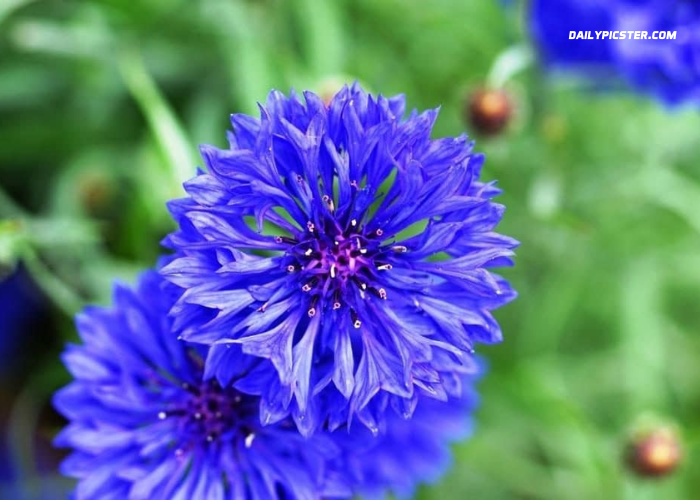In the realm of flora, beauty is not limited to manicured gardens or carefully tended flowerbeds. Nature has a way of surprising us with its resilience and creativity, often manifesting in the form of weeds. Among these seemingly unwanted plants, blue-flowered weeds stand out as a unique and intriguing phenomenon. Despite their reputation as nuisances, these uninvited guests offer a stunning display of color and contribute to the intricate web of ecological interactions. In this article, we will delve into the world of blue-flowered weeds, exploring their diversity, ecological significance, and the often underappreciated beauty they bring to both urban and natural landscapes.
The Spectrum of Blue
Blue, a color that symbolizes tranquility and depth, is a rarity among flowering plants. Its scarcity in the plant kingdom has elevated blue flowers to a level of fascination and appreciation. Whether in gardens, meadows, or roadside verges, the sight of a blue-flowered plant draws attention and ignites curiosity. However, this admiration is often dampened when the plant is labeled a weed.
Unveiling Diversity: Common Blue-Flowered Weeds
- Chicory (Cichorium intybus): Often mistaken for forget-me-nots, chicory is a plant with brilliant blue flowers that grace roadsides and fields. Its taproot has been used in various culinary applications and its leaves are believed to have medicinal properties.
- Cornflower (Centaurea cyanus): Also known as a bachelor’s button, cornflower is a true wildflower that once thrived in cornfields (hence the name). Its striking blue blossoms have inspired poets and artists, and it’s even considered the national flower of Estonia.
- Borage (Borago officinalis): While not entirely a weed, borage’s self-seeding nature can sometimes label it as such. Its star-shaped, blue flowers are not only ornamental but also edible and often used to garnish dishes.
- Speedwell (Veronica spp.): This diverse genus includes various blue-flowered species that find their way into lawns and gardens. Despite their small size, their presence adds a touch of elegance to even the most mundane settings.
- Viper’s Bugloss (Echium vulgare): With tall spikes of vibrant blue flowers, this biennial plant commands attention. It’s a favorite among pollinators, making it a valuable contributor to local ecosystems.
- Ecological Significance: Beyond Aesthetic Appeal
Blue-flowered weeds might be unwelcome in gardens, but they play an essential role in ecosystems:
- Pollinator Magnets: The vibrant blue hue of these weeds acts as a beacon for pollinators, attracting bees, butterflies, and other insects that are crucial for plant reproduction. In a world where pollinator populations are dwindling, every nectar source counts.
- Soil Health: Weeds, often with deep taproots, can help break up compacted soil and improve its structure. As they grow and die, they add organic matter to the soil, enhancing its fertility and water-holding capacity.
- Biodiversity Support: Blue-flowered weeds contribute to biodiversity by providing habitats and food sources for a range of animals, from insects to small mammals. This intricate network of interactions strengthens ecosystems as a whole.
- Succession and Disturbance: Weeds are often pioneers in disturbed or newly cleared areas. They help stabilize soil, prevent erosion, and pave the way for other plant species to establish themselves over time.
The Duality of Weeds
The term “weed” is often subjective, varying depending on context. What might be considered a weed in one setting could be a treasured wildflower in another. The concept of weeds challenges our notions of beauty and order, forcing us to reconsider the value we place on certain plants based solely on appearance.
Cultivating Appreciation: Embracing Imperfection
- Wildflower Meadows: Some landowners are embracing the beauty of blue-flowered weeds by creating wildflower meadows. These intentional landscapes showcase the allure of these plants while also supporting local ecosystems.
- Urban Biodiversity: In urban environments, where green spaces are limited, allowing certain weeds to flourish can contribute to urban biodiversity. Cities can become unexpected sanctuaries for pollinators and wildlife.
- Ecological Gardening: Gardeners are reevaluating their stance on weeds, recognizing that a perfectly manicured lawn might not be the best choice for the environment. Allowing a controlled variety of weeds can bolster the health of the ecosystem.
Conclusion
Blue-flowered weeds challenge our preconceptions of beauty and highlight the intricate connections between plants, insects, and the environment. They serve as a reminder that nature’s artistry isn’t confined to cultivated gardens alone.
These uninvited guests, often overlooked or scorned, offer a vibrant contribution to the world’s ecosystems. By reconsidering our perspective on weeds, we can embrace a more holistic approach to landscaping, one that prioritizes the health of our planet and the intricate tapestry of life that it supports. So, the next time you encounter a blue-flowered weed, take a moment to appreciate the unexpected beauty it brings to the world around us.



